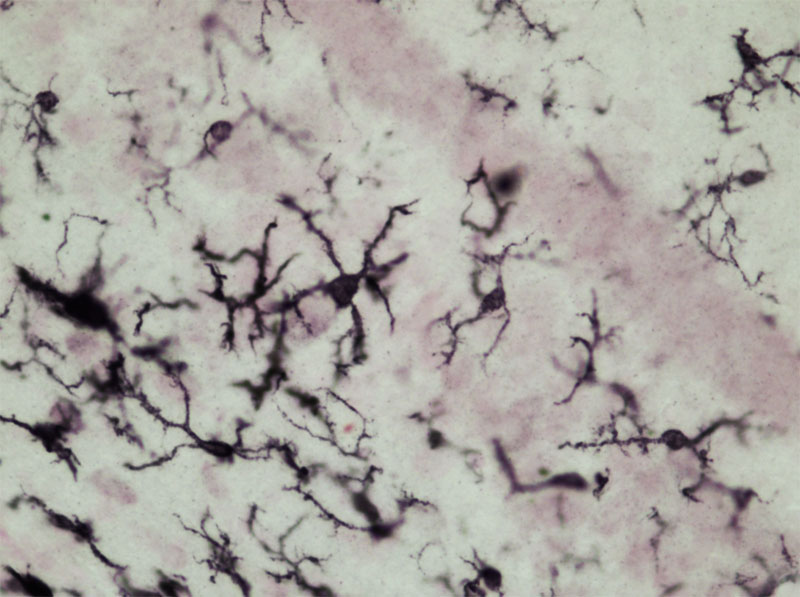
Uncovering the role of microglia in fetal alcohol spectrum disorders

Representative images of Iba-1+ microglia in the postnatal day 10 rat hippocampus. Image courtesy of Anna Klintsova, PhD.
Children born with fetal alcohol spectrum disorders face a range of physical and cognitive impairments including long-term deficits in learning, behavior, and immune function. In a paper published in Neuroscience, Dr. Anna Klintsova and her lab at the University of Delaware report that activation of the brain’s immune response may contribute to some of the damage caused by fetal alcohol spectrum disorders.
In their study, the researchers used Stereo Investigator and Neurolucida to examine the hypothesis that exposure to alcohol while the brain is growing rapidly is associated with abnormal microglial activation and high levels of pro-inflammatory proteins which impair learning-related plasticity; leading to neuro-developmental and psychopathological disorders.
“My lab has been using both Stereo Investigator and Neurolucida for more than a decade in all quantitative neuroanatomical studies, including the featured one,” said Dr. Anna Klintsova. “We find this software to be user-friendly, reliable and essential for obtaining unbiased results.”
They used Stereo Investigator to quantify the number of microglia in the hippocampus of neonatal rats who were exposed to alcohol during the equivalent of the third trimester of a human pregnancy. The researchers expected to see an increased number of microglia in alcohol-exposed neonatal rats, however they found a decreased number of microglia. Despite the decrease in microglia number, there was a significant increase in pro-inflammatory proteins expressed by microglia and an increase in microglial activation.
To measure microglial activation, the researchers quantified the area of cell territory using Neurolucida. Activated microglia have a smaller cell territory than resting microglia, so the smaller cell territory found in alcohol exposed rats indicates a more active state.
This research supports the hypothesis that abnormal microglia activation plays a role in fetal alcohol spectrum disorders, however more research is needed to further understand the relationship.
Boschen, K., Ruggiero, M.J., Klintsova, A.Y., (2016) Neonatal binge alcohol exposure increases microglial activation in the developing rat hippocampus. Neuroscience 324: 355–366. DOI: 10.1016/j.neuroscience.2016.03.033


